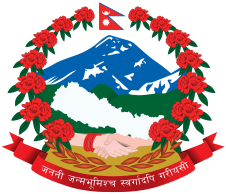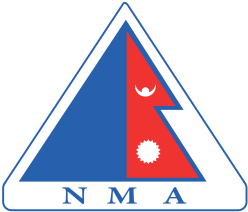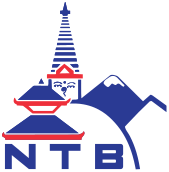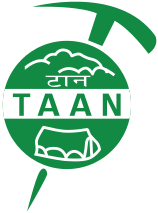SEE-NEPAL TRAVEL & ADVENTURE
NAMASTE
Welcome to Nepal. Here are a few suggestions and hints on things to do and see around Kathmandu and some tips on how to make your trip more exciting and comfortable. There are many things to see and do around the city and the valley of Kathmandu
Getting Around: Getting into town is not that difficult. There are lots of Taxis/ Rickshaws that are comparatively cheap. Taxi costs will depend on where you go. After 9 PM taxi fare will be double. For the taxis, you can bargain for a price or ask them to use the meter.
Staying Healthy: Most people who do not follow the following simple guidelines take the chance of being ill. Why not stay healthy!!! To be on the safe side, we suggest that you not drink the tap water from the sink. Always use bottled water to clean your teeth. You can buy bottled water everywhere, it is very cheap. You can buy 1 liter of water for 20/30 cents, in local money, Rupees 25 to 30. Make sure the bottle cap is not open before you buy it. Do not swallow any shower water when you take a shower. It is always better to eat well-cooked food. Do not buy local ice cream or use ice in drinks. Keep your hands as clean as possible (use antiseptic wipes or waterless gel). All fruits must be washed and peeled. Try to avoid raw foods/vegetables or salads etc.
Changing Money: You can exchange your money in any of the major hotels or banks in the city. There are many moneychanger places in the street as well. It will not make a big difference where you change it. Keep the receipt after you change your money. You have to watch how much you change. You can change it back to dollars at the airport on departure but you can get only 15% of what you originally exchanged.
Security: It is always a good idea to use the hotel’s free safety deposit for your valuables such as passport, your air ticket, and cash or traveler’s checks, etc. You can leave your passport and air ticket in the hotel until you come back from your trekking (if you are going on the trek) or you can always ask your group leader or guide. You can leave your passport and other valuables with your group leader if you are with a group. Hotels’ rooms are safe but it is better to not leave your valuables unattended.
Mail & Your address in Nepal
See-Nepal Travel P. Ltd
PO Box 11568, Kathmandu, Nepal
Batteries: Your Battery will run down quickly due to cold temperatures. It is a good idea to put some spare batteries inside your sleeping bag wrapping with socks. Do not throw used batteries in the trash. Please take them home with you and dispose of it properly. In Nepal, we do not have any batteries of disposable place.
Sightseeing: There are lots of things to see and do in Kathmandu. You can easily spend weeks or so looking around the street and temples in the valley.
Kathmandu Durbar Square: This is the center of the old city of Kathmandu. This used to be the Royal Palace and the residence of the Kumari Devi, the famous living goddess, in the 17th century. The Royal Palace has moved from here but the Kumari’s residence is still there.
Asan Bazaar/ Indrachok:- This is a very crowded area but you can have a great experience a way of life of people in the city. The streets are very narrow and small and full of people.
Monkey Temple:- This is one of the famous Buddhist temples. From here you can see most of the Kathmandu cities.
Boudhanath (Chhorten):- This the famous Buddhist stupa in Kathmandu. All the Buddhist people call it Chorten. Lots of Tibetan people are residing here so it is called little Tibet as well. It is a good idea to go there early morning or late afternoon so you can see lots of activities
Pashupatinath: This is a great Hindu Temple. All the Hindus will be criminated here by the bank or holy Bagmati River. Besides the above places, you can visit Patan, Bhaktapur, Dhulikhel, and Nagarkot as well.
Shopping: Kathmandu is full of shoppers and temples. You can buy many things in Kathmandu. Handicrafts are very cheap. You will see it most of around Thamel and Bhaudanath. Handicrafts and most of the goods do not have a fixed price. You can bargain to get a good deal. You can check the same item in a different shop and can get some idea. If you need any help, do not hesitate to ask us.
Restaurants: There are many good restaurants in the town. You can have any kind of food like westerner food, Tibetan Chinese food, Thai food, Korean food, Nepali of course. If you are interested to see Nepali culture dance with Nepali food (Dhalbhat), you can go to Bhanchha Ghar, Bhojan Griha or Nepali Chulo.
Mountain Flight: This is one of the most important things to do in Nepal. This flight leaves every morning from Kathmandu airport. The duration of this flight will be about an hour. You will see the most stunning Mountain View with Mt. Everest. For more details please contact us.
Trekking/Rafting/ Chitwan National Park/sightseeing: We organize and operate trekking, rafting, and Chitwan. If you are interested in doing anything please contact us. Our services are very reliable and the prices are inexpensive with great services.
Packing for the trek and the daily routine
Weather Conditions: The mountain weather is unpredictable. In any season night, the temperature can drop to below 0 degrees or more and snow may fall or rain at any time of the year. Temperatures can e hotter or colder depending on whether it is sunny or cloudy, windy or calm. Generally, the weather is good during the trekking season. You will get the cold depending on how high you go. You do not have to worry about normal trekking.
What to carry in your daypack? Rain jacket/windproof jacket, water bottle, film & camera, sun cream, wallet, a warm fleece, beanie, sun goggles, hat, pen & notebook, etc. If you forgot to bring any items, you can buy or rent in Kathmandu before you leave for trek.
What happens to the rest of your trekking gear? All the trekking gear will be packed in the See-Nepal’s bag, which will be provided on your arrival in Kathmandu. Porters or Yaks will carry it during your trekking. You will not have access to your bag until the later afternoon when we get to the campsite for that evening.
What to wear? It is always a good idea to wear long pants for the ladies to respect the locals. If you are doing trekking in the village it is very important. In the cities, you can wear, as you like. Gents can wear shorts. On the trek, wear always a hat and put sun cream before you leave the campsite. Generally, the morning will be cooler so wear comfortable gear. As soon as you walk for a half-hour or so you will get warm and you can take off some of your layers.
What to do when I get to the campsite? After you arrived at the campsite you will be provided a small bowl of warm water in a washing bowl so you can have wash yourself. Change the gear. Wear dry socks and T-shirts. Let the wet T-shirt dry and socks as well. After a couple of days you might have to wash your socks or put in a plastic bag to keep it separate from clean clothing.
What happens if I get ill during the trek and can’t carry my own day bag?
You will be well looked after by us during the trek. We always carry a Wilderness first aid medical kit, which will be accessible at any time. As per your illness, we will give you treatment. If it is an emergency, we will evacuate as soon as possible and take to where the medical help is available.
If you can’t carry your day bag, do not hesitate to ask one of your tour leader or us. One of our assistant guides will help you to carry the bag.
Batteries: Your Battery will run down quickly due to cold temperatures. It is a good idea to put some spare batteries inside your sleeping bag wrapping with socks. Do not throw used batteries in the trash. We request to take the used batteries back to your home and dispose of there. In Nepal, we do not have any batteries of disposable place.
Dailey Trip Routine: On the trip, you will be woken with a cup of black tea brought to your tent by your guides while you are having a dream around 6 am to 7 am & after that you will be brought a small bowl of washing water. After your cup of tea and washings, you have to pack your gear before you come to breakfast. Your guide will take your tent down and the porters will take your gear and tent. Breakfast is from 7:30 to 8:30 and we will leave the campsite as soon as breakfast is finished. We stop for lunch at around 11 am or 12 pm for two hours. Our crew will provide you with a hot lunch and then we hit the trail again for the campsite. We will get to the campsite around 3 pm to 4 pm. As soon as we arrive at the campsite you will gain be brought a bowl of warm water and then starts the afternoon tea with cookies. Around 6 pm or 630pm dinner will be served.
FOR MORE INFORMATION & ARRANGEMENTS PLEASE CONTACT US AT OUR TRAVEL DESK
SEE-NEPAL TRAVEL
014412912 or 9851099603
Email: sales@see-nepal.com










